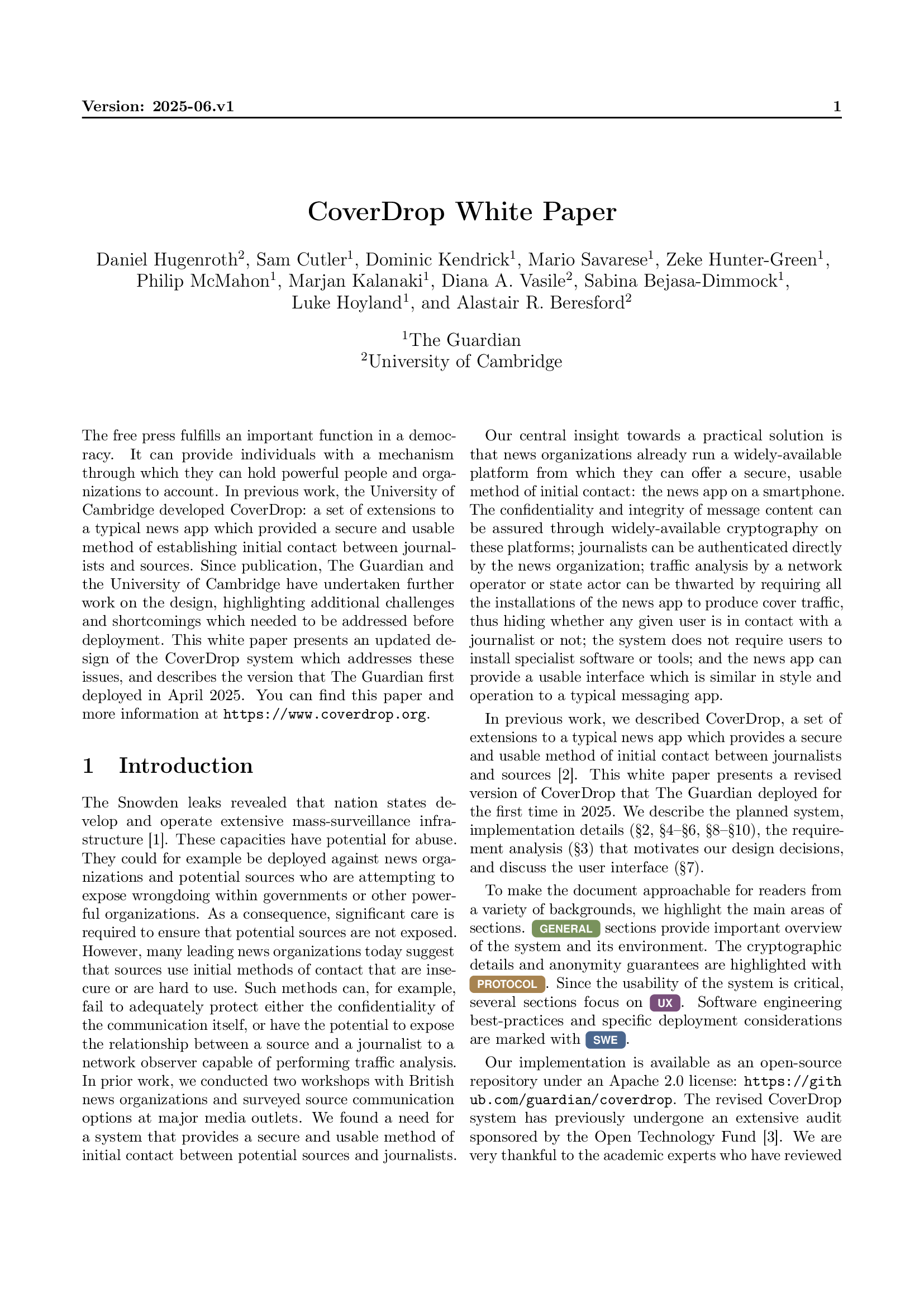CoverDrop: Blowing the Whistle Through a News App
The free press fulfills an important function in a democracy. It can provide individuals with a mechanism through which they can hold powerful people and organizations to account. A team at the University of Cambridge and The Guardian developed CoverDrop: a secure, anonymous, and usable method of establishing initial contact between journalists and sources embedded in a set of extensions to a typical news app.
The new white paper from June 2025 describes the design and implementation of CoverDrop—deployed to millions of users. It is based on the original research paper presented at PETS in 2022 by Ahmed, Vasile, Hugenroth, Beresford, and Anderson.

The CoverDrop system
Confidential
All messages between sources and journalists are end-to-end encrypted.
Ease-of-use
Included in the news reader app for every user: no technical wizardry needed.
Anonymous
Real messages hide among the cover traffic sent by all app users: CoverDrop protects metadata.
Plausible deniability
Sources can plausibly deny that they have used CoverDrop: even when asked to unlock the device.
Real world
The Guardian deployed CoverDrop to millions of news reader installations in 2025.
Research project
CoverDrop started as an academic project and remains an active research area at the University of Cambridge.
Questions and answers
How CoverDrop works
CoverDrop's security model
More about CoverDrop
@article{coverdrop2022pets,
author = {Ahmed-Rengers, Mansoor and Vasile, Diana A and Hugenroth, Daniel and Beresford, Alastair R and Anderson, Ross},
title = {Coverdrop: Blowing the whistle through a news app},
year = 2022,
journal = {Proceedings on Privacy Enhancing Technologies},
number = {2},
pages = {47--67},
doi = {10.2478/popets-2022-0035}
}
@techreport{coverdrop2025implementation,
author = {Hugenroth, Daniel and Cutler, Sam and Kendrick, Dominic and Savarese, Mario and Hunter-Green, Zeke and McMahon, Philip and Kalanaki, Marjan and Vasile, Diana A. and Bejasa-Dimmock, Sabina and Hoyland, Luke and Beresford, Alastair R.},
title = {{CoverDrop White Paper}},
year = 2025,
month = jun,
url = {https://www.cl.cam.ac.uk/techreports/UCAM-CL-TR-999.pdf},
institution = {University of Cambridge, Computer Laboratory},
doi = {10.48456/tr-999},
number = {UCAM-CL-TR-999}
}
Contact and acknowledgements
The corresponding authors for the ongoing CoverDrop project research are Dr Daniel Hugenroth (dh623@cam.ac.uk) and Prof. Alastair Beresford (arb33@cam.ac.uk). We thank the Department of Computer Science at the University of Cambridge, The Guardian, Nokia Bell Labs, and the Open Technology Fund for their support.



